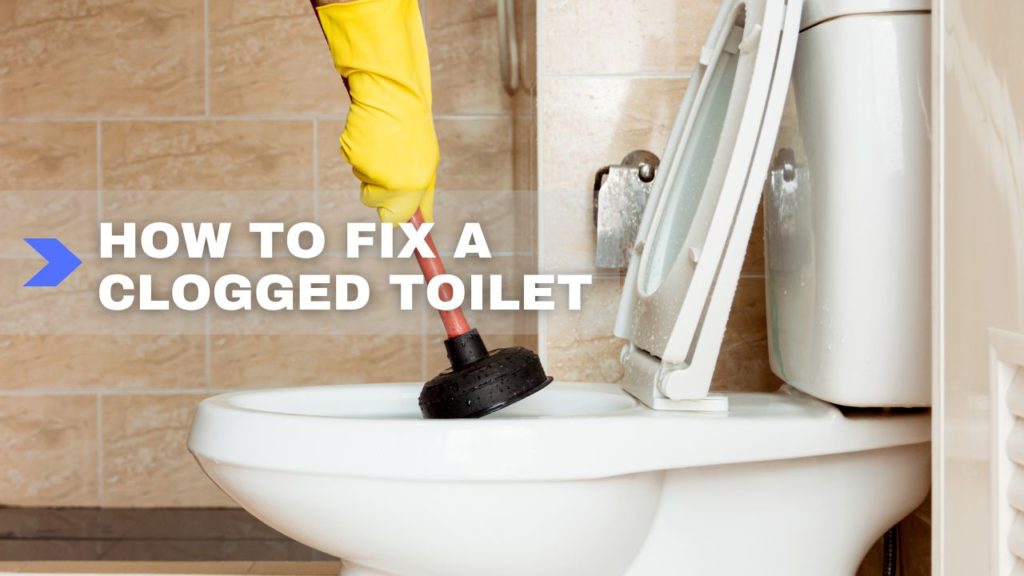The sight of dirty water rising in the toilet bowl instead of going down, dangerously close to the edge, is enough to make even the toughest person terrified. If you’re wondering how to fix a clogged toilet or are concerned about doing it incorrectly, you’ve come to the right place.
Table of Contents
With a Plunger
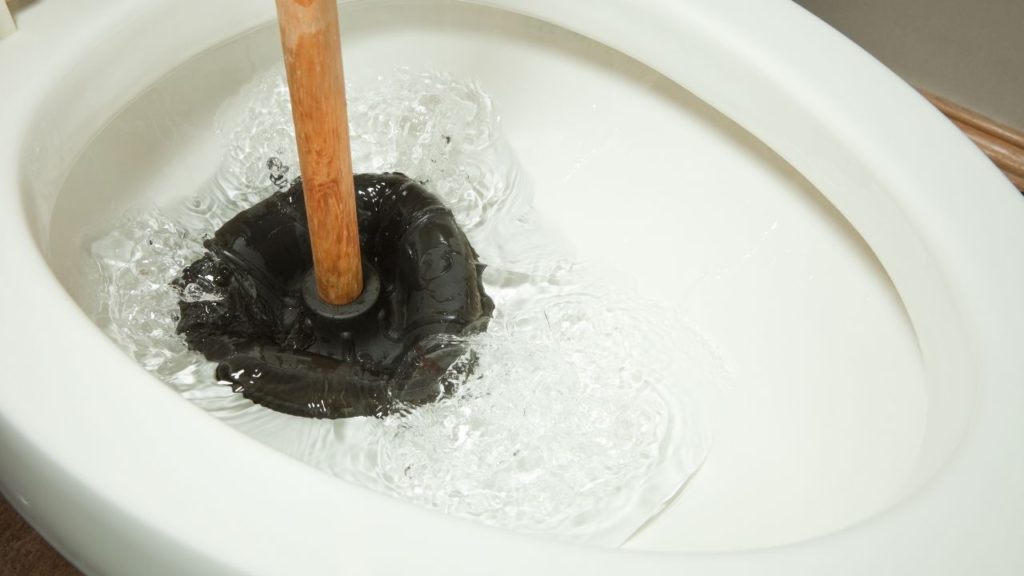
A toilet plunger is something that almost everyone has seen. It consists of a two-foot-long wooden or plastic handle with a flexible rubber bowl or flange on the end. Some are actually quite fancy, with various designs and sizes. They all, however, work on the same principle.
Contrary to popular belief, you should not flush the toilet while plunging. This will not speed up the release of the blockage; In fact, it may work against the plunger method by breaking the seal that is required over the hole at the bottom of the bowl.
Here’s how to fix a clogged toilet using a plunger:
How to Use
- The first thing you should do is stop flushing the toilet to prevent it from overflowing.
- Wait ten minutes for the water level to drop before turning off the water supply hose on the side of the toilet clockwise. Bail out any excess water. Add a little water if it is too low to form a good seal.
- Check that the flange or cup is not compressed before inserting it into the bowl, and ensure that the rubber ring is directly over the drain opening.
- Push and pull on the plunger quickly for about twenty seconds without removing it from the drain, taking care to keep the seal closed. Typically, this is all that is required to clear the clog.
- If done correctly, the clog will be dislodged, and the water will drain from the bowl into the line. You can then flush several times to ensure the water flows freely.
Without a Plunger
While the plunger is the cheapest and most effective method of clearing the toilet drain, it may not work for your specific situation, or you may not have one on hand.
Luckily, there are different ways you can fix a clogged toilet without a plunger. Whatever method you use, as with the plunger, do not flush the toilet repeatedly, especially if the water level continues to rise. You do not want a flooded bathroom floor on top of a broken toilet.
Vinegar and Baking Soda

Baking soda and vinegar mixtures have long been used in home maintenance and cleaning. This works by breaking down organic matter, such as hair and grease, that may be clogging a drain line.
How to Use
- Begin by combining 1 cup of baking soda and 1 cup of vinegar in a half-filled toilet bowl, preferably with hot water.
- Pour the baking soda first, followed by the vinegar slowly and carefully. Make sure it doesn’t spill.
- Allow it to soak for about 20 minutes before flushing the toilet. If it was successful in dissolving the clog, everything should drain naturally.
Plumbing Snake

The use of a plumbing snake on a toilet is controversial. It is generally effective at removing clogs, especially in drains in the shower or sink, but using it too vigorously risks breaking or chipping the porcelain toilet bowl. If you decide to use a plumbing auger line, use it with caution and avoid jerky movements to break up the clog.
How to Use
- Insert the coiled end of the auger into the drain first.
- Begin slowly cranking the handle to allow it to unfurl down the line. You may need to guide it into the pipe, particularly at the toilet’s S-bend.
- Turn the handle until you feel it catching on the clog. Rotate the cable to attach to the clog and begin breaking it apart.
- To reel the snake back in, rotate the handle in the other direction. You may have to pull the clog out, or it may break apart and drain on its own.
- Flush the rest of it down the line with hot water and pull out the snake.
Remember that, like plungers, you can use several different types of augers, but they are all typically built the same way – with a spiral piece of metal attached to a long cable cranked by hand. It can reach deep into the pipes to dislodge any clogs that are out of reach.
Wire Coat Hanger
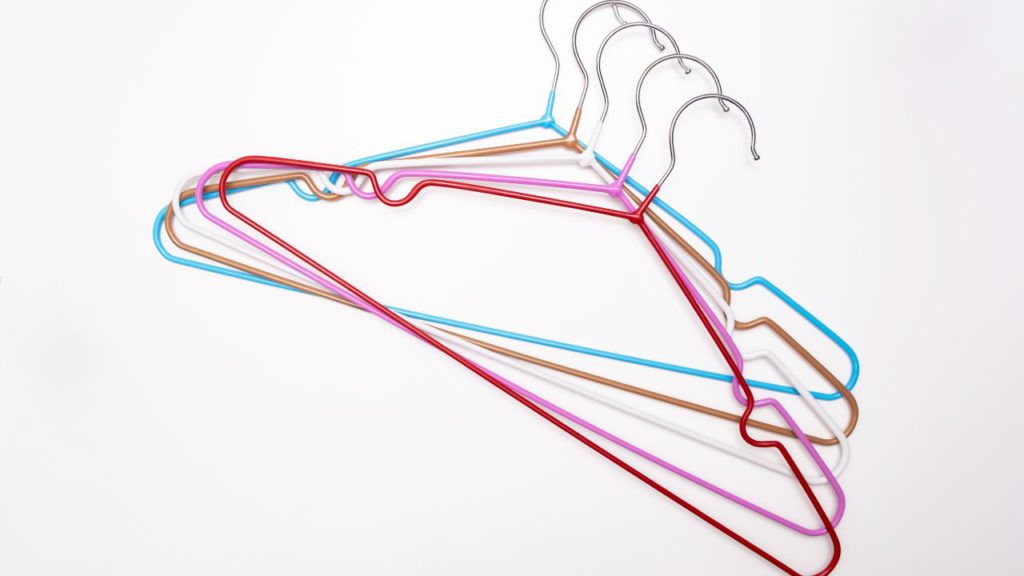
A wire coat hanger functions similarly to a snake, albeit on a smaller DIY scale. If you’re worried about breaking or chipping your toilet bowl’s porcelain with a snake, you can cover the end of the wire hanger with a cloth. Just make sure that it is attached securely.
How to Use
- Straighten the hanger and insert it gently into the line. Be gentle, and don’t push it too far.
- Gently move the wire around once you feel you’ve reached the obstruction, and it won’t go any further.
- If this does not clear the clog, pull it out again, bend the wire end into an S shape, and re-insert it. The wire’s bent end may catch on the edge of the clog and break it free.
- Turn it carefully in both directions to twist it deeper into the clog, then gently pull it away from you. If everything is in order, the water should drain easily.
Hot Water and Dish Soap

Hot water and dish soap are often used to break up organic matter and grease. Be sure to use Dawn dish soap if available, as not all dish soaps are equally effective for this method.
How to Use
- Cut off the water supply.
- Remove the water until there is only a little left in the drain.
- Pour a gallon of hot water halfway into the bowl.
- Add a cup of Dawn dish soap and vigorously stir with a disposable stick.
- Allow it to sit for 20 to 30 minutes to allow it to penetrate the pipes and break up the clog. This method is also effective when combined with the snake or wire hanger methods. It can, however, be used on its own.
- After the required time has passed, reconnect the water and flush the toilet. If the water does not drain, repeat the process one or two more times.
Plunge With a Plastic Bottle
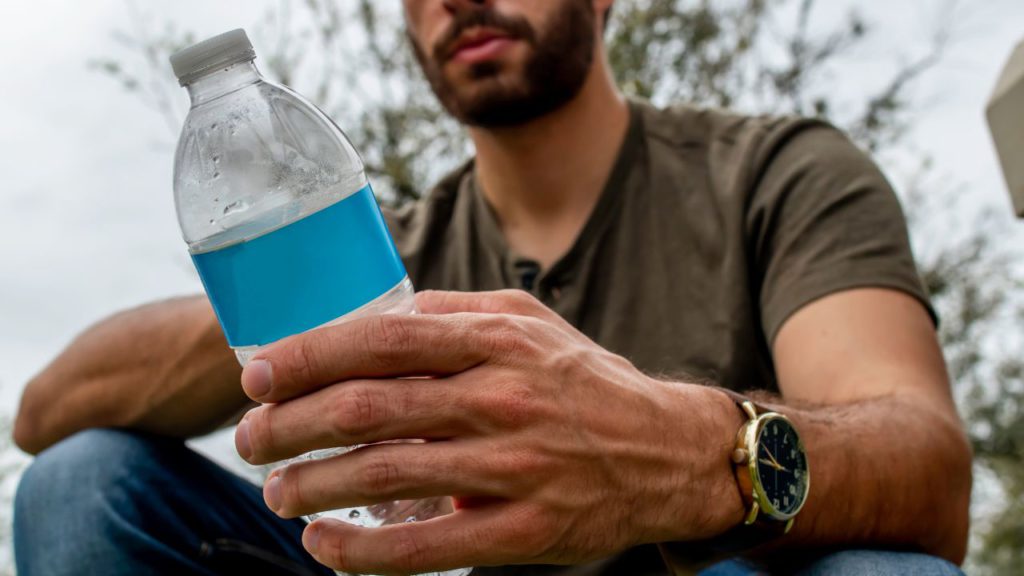
Before you try this method, keep in mind that it is fairly messy and filthy, so you will definitely want to wear long rubber gloves because you will be putting your hand into the clogged toilet water. There are two methods of doing this, so choose the method you believe will work best for your specific toilet design.
How to Use
The first method
- Gather a plastic bottle of the appropriate size, scissors or a knife capable of cutting the plastic bottle, and plastic wrap or a rubber band. One or two-liter plastic bottles are ideal for this method.
- Cut off the bottom of the bottle and seal the top with the included cap or plastic wrap and a rubber band.
- Insert the open end of the bottle into the drain and plunge it up and down several times to create the pressure needed to push the clog down the line.
The second method
The materials are the same in this method, but the process is slightly different. Instead of cutting the bottom of a two-liter bottle, you will use it to pour warm, soapy water down the clogged drain.
- Fill the bottle with hot soapy water, as hot as you can stand holding it.
- Place your finger over the bottle’s mouth. This will allow you to position the neck of the bottle in the drain hole.
- Pour the bottle’s contents down the toilet drain and squeeze the bottle to force the water down. The clog should be dislodged by the water pressure.
Wet/Dry Vacuum
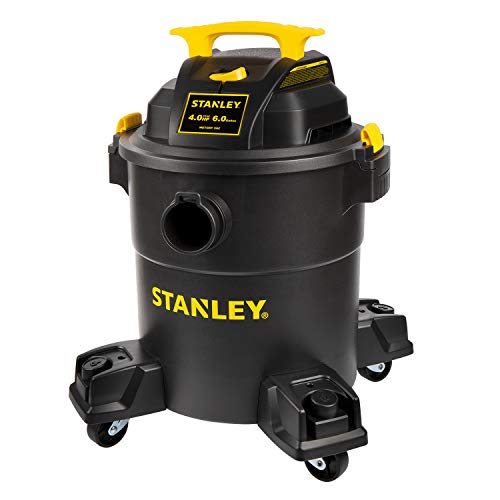
The wet/dry or shop vac method is not commonly used to unclog a toilet, but it works. Turn off the water supply and drain as much water as possible from the toilet. You should also remove the filter from your vacuum. If you are wondering how to fix a clogged toilet using a wet/dry vacuum here’s how:
How to Use
- Once you’ve drained as much water as possible, place the vacuum hose end over the drain and vacuum it out. Do not use vacuum attachments, as they may aggravate the problem if they come off in the line.
- You can create a good seal by wrapping towels around the hose at the drain hole. The clog should be removed relatively quickly.
- Make use of suction to remove the clog. Do not attempt to push it any further by blowing it.
Try Chemical Drain Cleaners

If mechanical means of plunging the toilet do not work, certain chemicals can be used to unclog the drain. If you go with a commercial toilet drain cleaner, make sure to follow all of the directions.
How to Use
- Determine the proper amount of drain cleaner to use in a toilet drain. This should be stated explicitly in the instructions. Remember to use a chemical that is labeled for use in toilets.
- Do not assume that all drain cleaners are the same as those used in sinks and showers, as many are not rated for toilet use. For example, Drano is not recommended for toilet use, particularly the gel version.
- When using a chemical, let it sit for a few minutes, usually a half hour, before flushing the toilet to dislodge the clog.
How to Stop a Toilet From Overflowing When Clogged
If your toilet is overflowing, remember not to panic. You want to take the proper steps to avoid making the problem worse. Follow these steps to stop your toilet from overflowing:
- Take the top off the tank and pull up the float to keep the tank from refilling and/or continuing to flush. Secure it, so it does not fall back down and refills again.
- At the base of the toilet, you will find a knob. Turn it clockwise to turn off the water supply.
- Turn off your home’s main water supply. If you cannot get step 2 to work, do this after step 1.
- Mop and clean up around the toilet before beginning the mentioned DIY repairs listed above.
- Do not flush the toilet again until it has been fixed.
How to Avoid a Blocked Toilet
“An ounce of prevention is worth a pound of cure,” as the old adage goes. You can avoid costly plumber bills and the inconvenience of having to unclog your toilet by taking preventative measures. Some of the following suggestions may be useful.
- Only water, toilet paper, and human waste should be flushed. Do not flush anything else, as they frequently cause clogs. This includes “flushable” wipes, which are not designed to break down quickly, nor are tampons or cotton balls.
- Keep the lid closed to prevent items from falling in accidentally.
- Keep an eye out for tree roots that can grow into pipes, particularly older concrete pipes, and block the sewer line, causing backups.
- Do not obstruct the flow of water by placing a brick in the tank to try and save water. Use the appropriate amount of water for your toilet, as too little does not properly push waste down the line.
Clog-Free Toilets
Now that you know how to fix a clogged toilet, you should have no trouble performing minor maintenance the next time your flush fails or the water overflows. If two or three of these methods do not work, the problem may be more severe than a clog and necessitate a professional plumber’s services.
